In this article, we will discuss the effect of rotor reactance on the maximum torque of the induction motor. The torque-delivering capacity of an induction motor depends on the following electrical parameters.
- Stator flux per pole
- Rotor Current
- Power Factor of the rotor circuit
We can express the torque of an induction motor by following mathematical expressions.
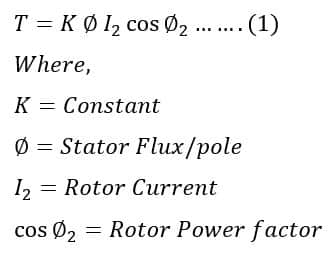
The above expression shows that the torque of an induction motor depends on the power factor of the rotor circuit. And, thus rotor power factor has a significant effect on the torque of an induction motor.
The EMF induced in the rotor is proportional to the stator flux, and we can write equation (1) as;
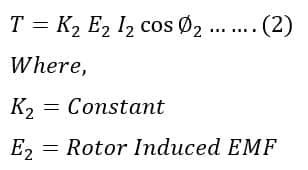
The rotor power factor is always lagging and thus motor delivers positive torque. For a purely resistive rotor, the power factor is unity and the torque delivered by the induction motor is positive. If the rotor is inductive the power factor(CosΦ2) has zero value and therefore, the motor will deliver no torque.
The rotor of an induction motor has both resistive and reactive properties and delivers a positive average torque. The value of the average torque reduces with an increase in the reactance of the rotor. The increased reactance causes a low power factor of the rotor, and as a result, the torque of the motor reduces. when the rotor reactance becomes larger than its resistance, then the torque of the motor reduces.
The rotor resistance value is increased at the start of the induction motor to achieve the maximum pull-out torque. For understanding the Effect of Rotor Reactance on the Maximum Torque of an Induction motor, let us assume that the rotor resistance is constant.
The rotor impedance can be calculated using the following mathematical expression.
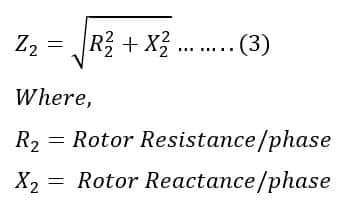
From the above equations (2) & (3), we can calculate the starting torque of the induction motor when the slip of the motor is unity.
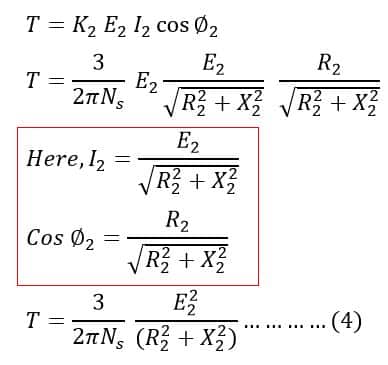
The rotor resistance and the supply frequency are constant at the start, and the slip is equal to 1. We can rearrange equation(4) considering constant supply voltage, frequency, and rotor resistance at the start of the induction motor.
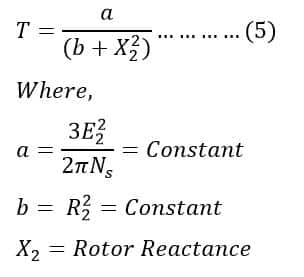
Let, the rotor reactance is zero, which is absolutely a hypothetical case. We know, the rotor reactance can not be zero in any case. Now, if we put the zero rotor reactance value in equation(5), we get;
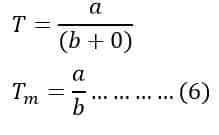
With increased rotor reactance the torque of induction at the start decreases in an inverse parabolic fashion. The graph showing the relationship between the starting torque of the motor and an increase in the rotor reactance is given below.
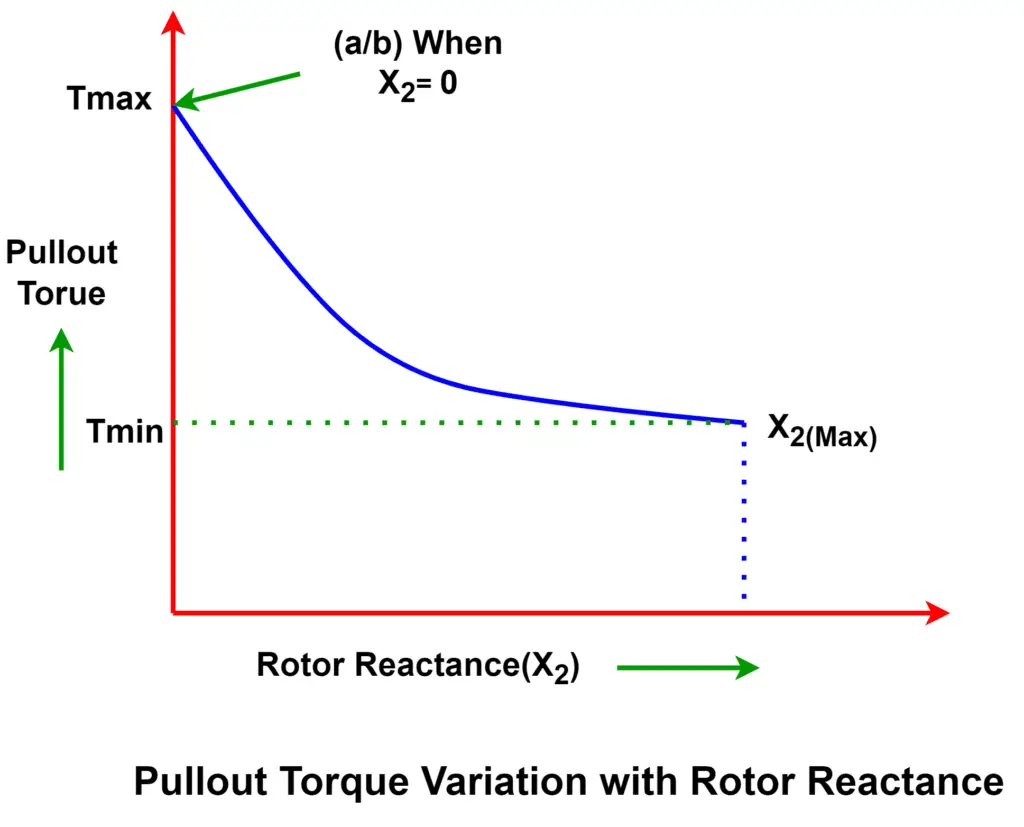
Summary – Effect of Rotor Reactance on Torque
- A very large value of rotor reactance causes a poor power factor.
- A large reactance causes poor starting torque of the induction motor.
- The induction motor draws a large current at the start if the rotor reactance value is very high.